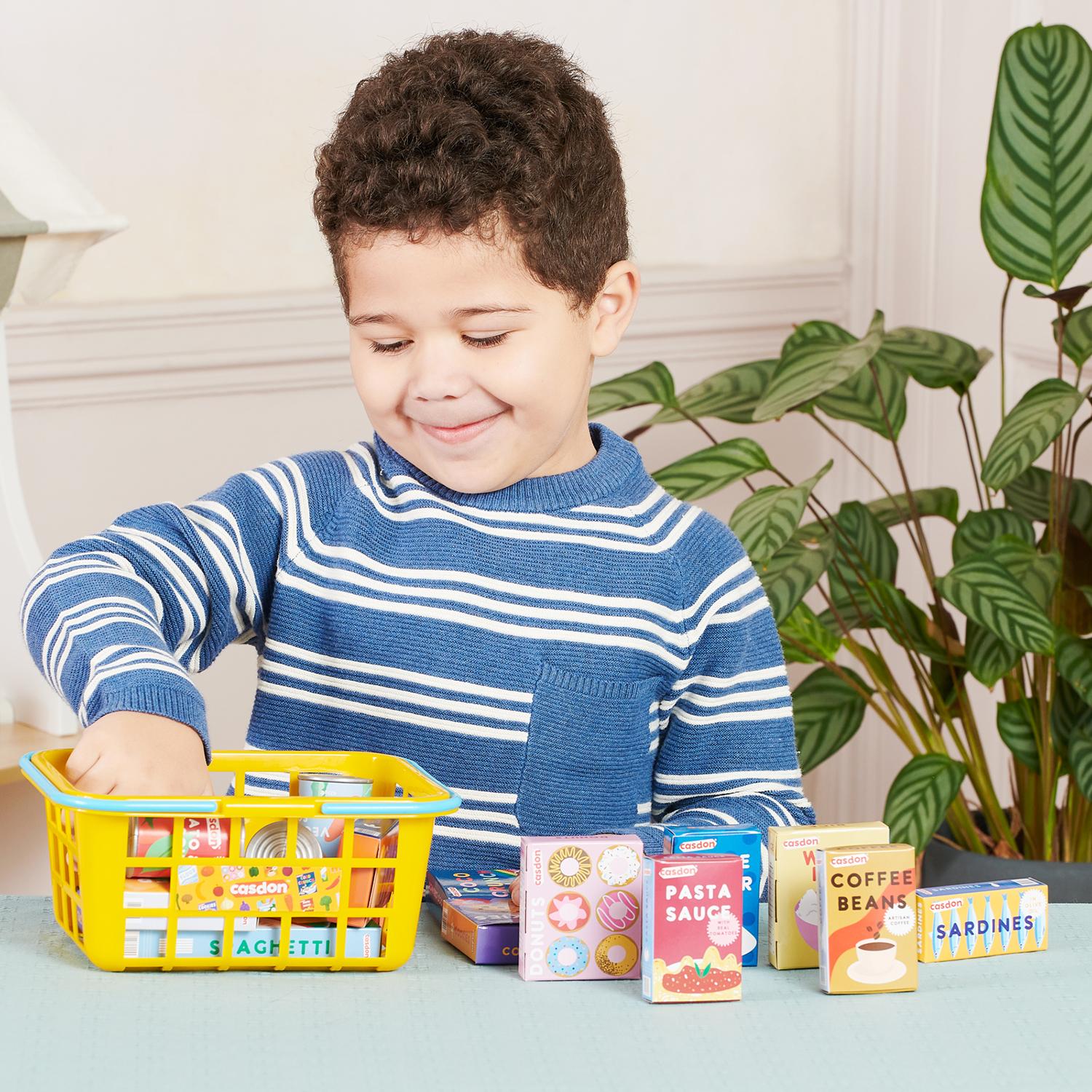exploring play schemas with casdon!
pairing education & play
whilst we all know that play is an essential aspect of childhood development, fostering imagination, creativity and cognitive growth. did you know, it is through play that children explore the world around them, experiment with ideas and develop essential skills? in this blog post, we dive into the fascinating concept of play schemas, and their significance in a child’s development, focusing on our role as a toy manufacturer in nurturing and supporting these schemas.
so, what are play schemas, you ask?
think of them as a series of repetitive play patterns that help children understand the world and develop essential skills. play schemas offer valuable insights into a child’s cognitive and emotional development. they enable children to explore, practice, and refine their understanding of the world through a series of common play patterns.
what are the different play schemas?
connection
joining things together, connecting objects, opening and closing things. you might see this when playing with puzzles, building sets.
transforming
combining or changing materials, mixing things together. you might encourage this through baking with your little ones, watch as they learn through combining ingredients such as eggs and flour!

orientation
experimenting with different viewpoints, like hanging upside down.
trajectory
moving objects by throwing, dropping or rolling, trajectory of your own body.
rotation
interest in things that spin or turn, spinning themselves, drawing circles. we’ve seen this through actions as simple as your little one spinning their toy sat nav steering wheel.

enveloping
covering objects or themselves, hiding things in discrete places. A great example of how your little one can develop this skill is through sending letters with our post office set.

enclosure
containing things, creating borders around objects or themselves
positioning
arranging or lining up objects or themselves in a particular way.
transporting
carrying objects in pockets, hands or bags, transporting oneself or others. this could be filling up and transporting their toy shopping basket from shelf to checkout!

what are the developmental benefits of play schemas for my little one?
- cognitive development: engaging in play schemas enhances critical thinking, problem-solving, and decision-making skills, laying the foundation for future academic success.
- emotional development: play schemas provide children with opportunities to express and explore their emotions, develop empathy, and understand social dynamics through role-playing scenarios.
- physical development: play schemas involving movement, coordination, and fine motor skills contribute to the development of physical abilities and body awareness.
how can I encourage play schemas at home?
- create play environments: set up play areas at home that cater to different play schemas, providing children with a diverse range of play opportunities.
- get involved: emphasize the crucial role of adults in observing, supporting, and extending children’s play schemas, fostering deeper understanding and growth.
play schemas serve as a window into a child’s world, allowing us to witness their learning and development unfold. with our realistic and purposeful designs, our toys offer an ideal platform for children to engage in play schemas, stimulating imagination, cognitive skills and development. by embracing and encouraging play schemas, parents, caregivers and educators can facilitate a rich and meaningful play experience, nurturing children’s growth into curious, creative, and capable individuals.
be inspired
To parents, we offer products that support their role in play. To children, we inspire limitless imagination, which enables them to be just like them



